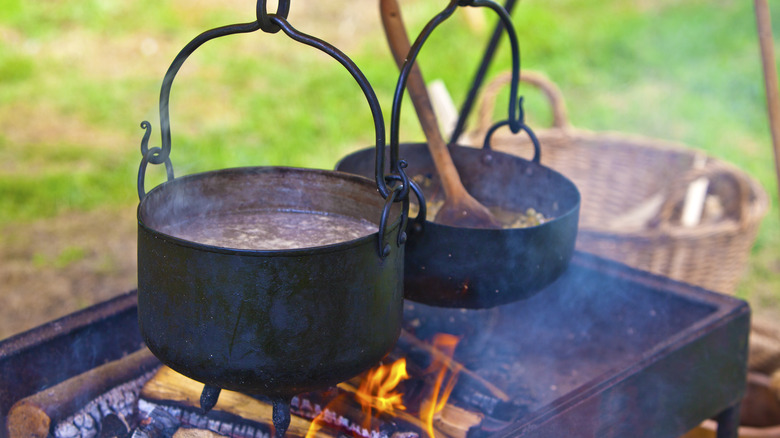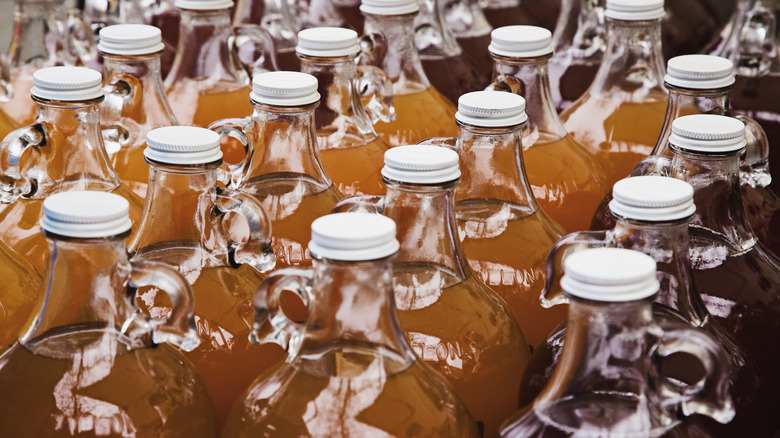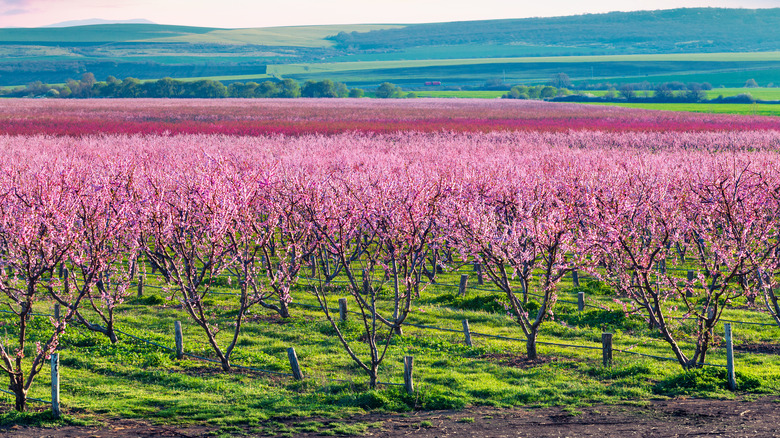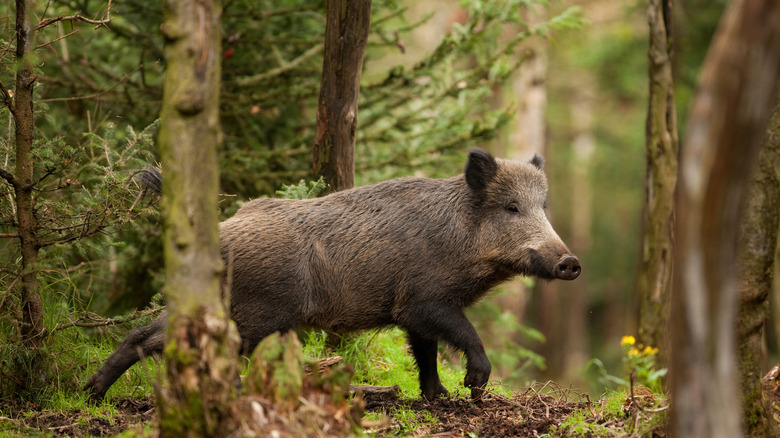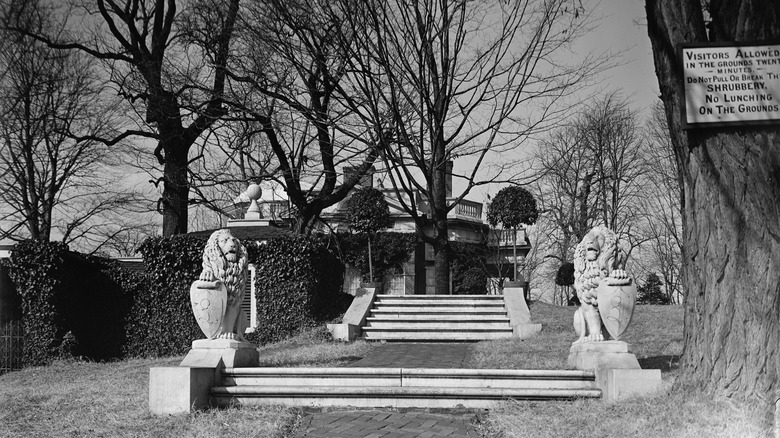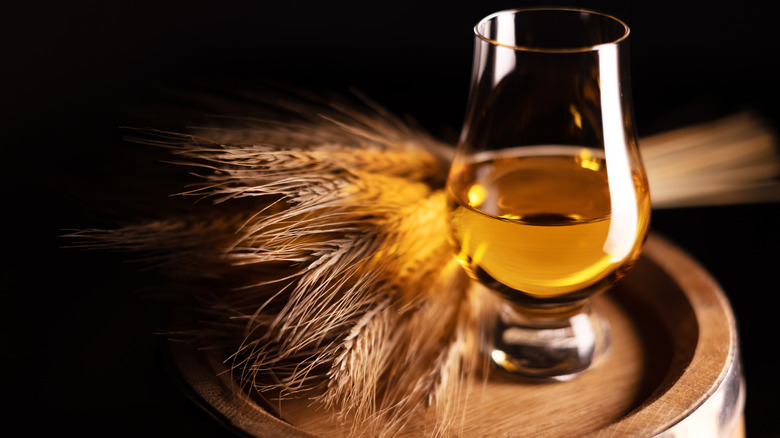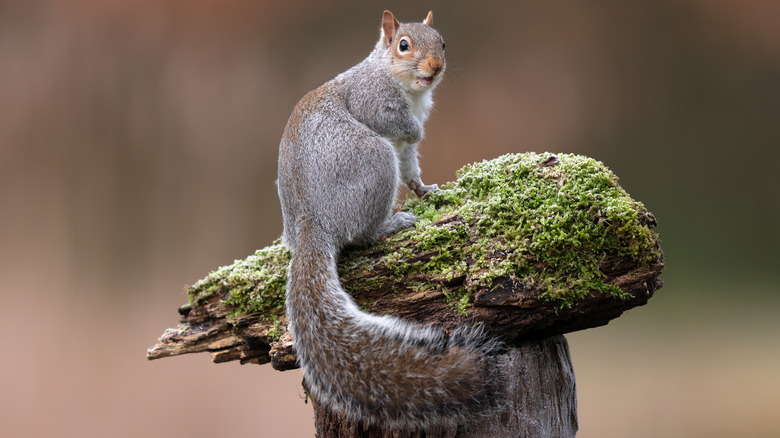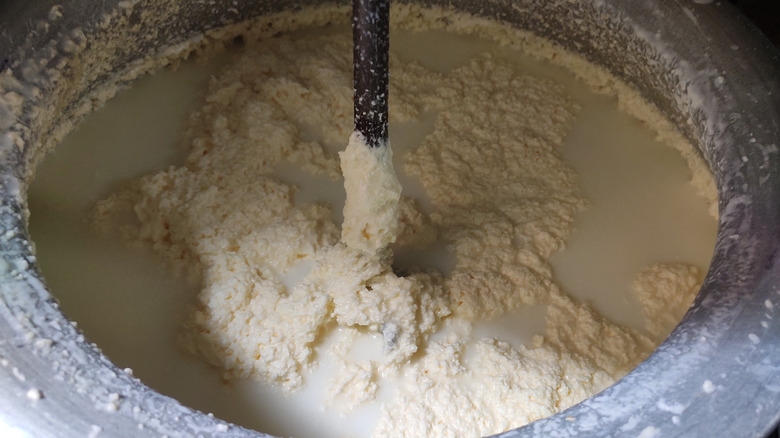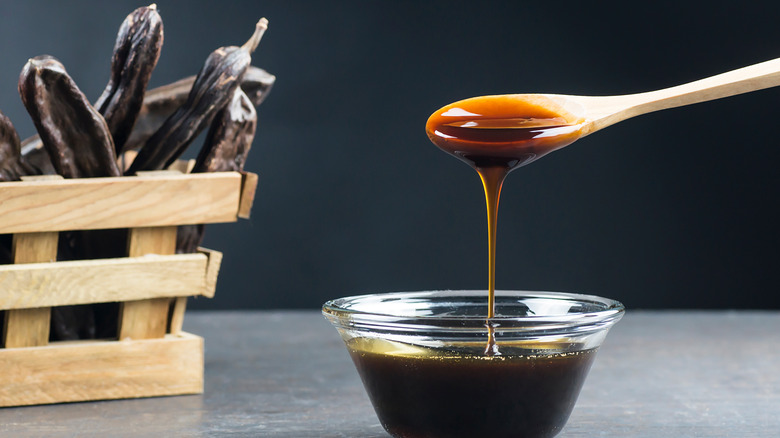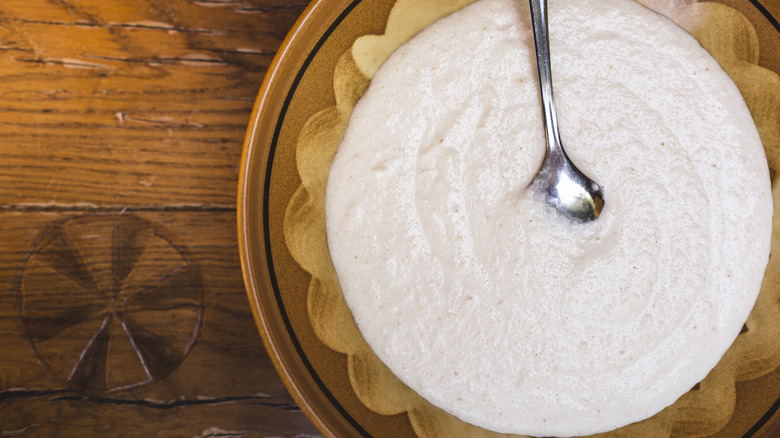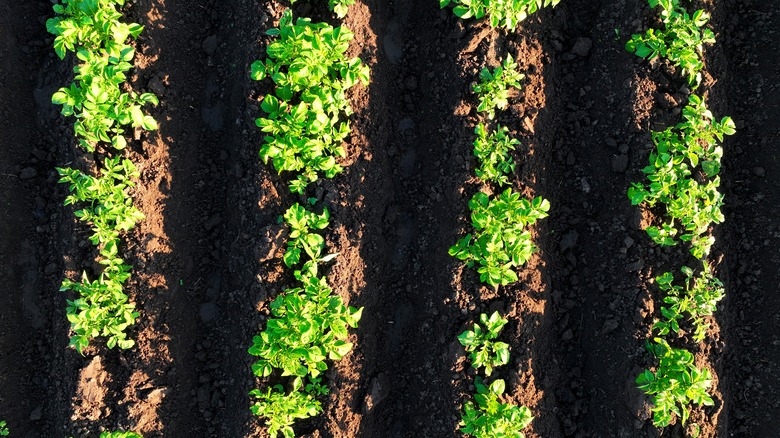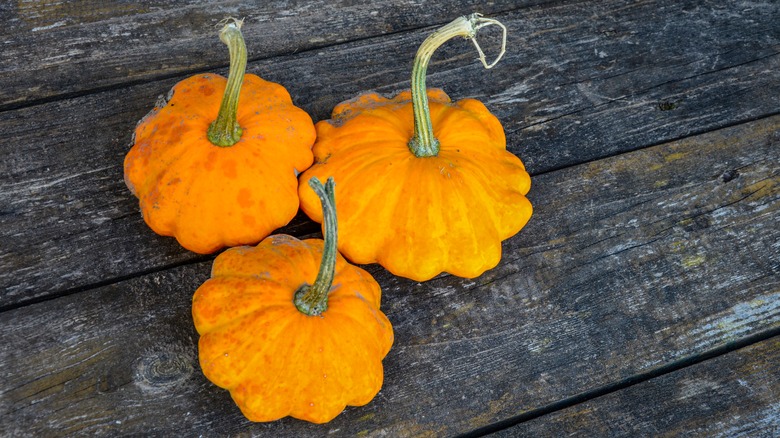What Did The First Settlers In America Really Eat?
Autumn invites reflection: As the weather cools, the leaves begin to change, and the year draws to a close we can't help but look back. And of the holidays that invite us to take a look back, not one of them does it quite like Thanksgiving. While the feasting holiday traditionally invites dinner guests to practice gratitude, a lot of attention has turned to the holiday itself in the recent age. Currently, there are a lot of questions and thinkpieces about how to reconcile the realities of the past with the fantasy of the holiday. As we navigate the present and decide how to improve the future, there can still be inquiry into how things have changed, and stayed the same, since colonial times.
The American cuisine that exists today is far away from what it was in early U.S. history, though the influence of the past can still be seen with a trained eye. With our own questions and curiosity, we turned to Professor Dr. Mary Beth Norton of Cornell University. Specializing in American colonial history, with special attention on women's history, Professor Norton has incomparable insight and understanding of what exactly early settlers were eating, and who was doing what to ensure everyone was eating. In an interview with Mashed, she dug into early American food between the 16th and 17th centuries. Read on to learn what American colonists ate and how they cooked.
Apples
Professor Norton clarified that in the 17th century, the colonies were largely isolated from each other. There was no easy way to communicate, and most trade was still running primarily outside the colonies. This meant that the settlements were largely insular when it came to foodstuffs: Communities ate by and large what was on hand and in season.
In New England apples were of particularly large importance. Originally, only crab apples grew in North America according to Connecticut Explored. These tiny apples were extremely bitter and rarely eaten. It wasn't until the late 16th century that apples were allegedly first brought to the continent by French Jesuits (via North Carolina Historic Site). Later, in the 17th century, the Pilgrims began cultivating apple seedlings throughout New England.
These apples quickly became an extremely important foodstuff for both colonist and indigenous communities. Apple trees would produce a harvest from late summer into October and provide an abundance of healthful fruits chock-full of vitamins. Professor Norton notes that beyond raw consumption and fresh use in porridge, apples would be brewed into cider by women. Because water was so unsanitary at the time, hard cider was a primary drink in the colonies for both old and young. She even notes that some theorize that colonists had a slight consistent buzz due to the libations. A considerable portion of the apple harvest would also be dried and stored to help colonists weather the harsh and unforgiving winter.
Peaches
While apples eventually spread throughout the colonies, and across the States, peaches had a very special meaning for the Southern colonies of the United States. Similar to apples, peaches were brought from Eurasia to the Americas via missionaries (via The Wisconsin Department of Public Instruction). The first peach tree is believed, according to the above source, to have been planted in contemporary Florida around the 16th century and could be found thereafter growing throughout the 13 colonies. This was partially due to the natural spread of the plant but also due to migrating Native Americans and colonists who brought the trees with them as they moved across the continent as per The Monticello Organization.
Around 200 years later, by the 18th century, peach trees were reported to have grown so widely and naturally across the Mid-Atlantic that a surveyor described them as growing as densely as weeds (via The Monticello Organization). Eventually, according to the latter source, peaches became a symbol of abundance in the Americas and all the bounty that was to be had there.
Pork
Professor Norton made a point of noting that meat consumption was a lot different in the early days of colonies. She observes that it's a misconception that colonists were enjoying meat all the time, as hunting was a quite time-consuming and often unfruitful event. Instead of hunting flighty deer or protecting massive hoards of sheep from predators, colonists instead turned to more manageable livestock: pigs.
While pigs were much smaller than other livestock, say like cattle, they were also more manageable. As noted by the Colonial Williamsburg Foundation, pigs reproduce quickly and could easily be let out to the woods to roam and fatten in the forest. Hogs would be rounded up in autumn or winter and then slaughtered en masse. With relatively little effort, communities could get access to lots of meat. Both the Foundation and Professor Norton clarify that there were special measures to make sure the hogs would make it back to their rightful owners. Farmers, especially in the Maryland territory, would cut a unique pattern of notches into their hogs' ears. These notch patterns would be registered and reported as the hogs were slaughtered to make sure that each farmer received the pork from their own hogs. The pork would be salted to carry over and provide nourishment during the winter.
Kitchen garden vegetables
A very important part of the colonial home was the kitchen garden, according to Professor Norton. In New England, colonists carried seeds over with them from England to grow abroad. While not every seed could be cultivated across the pond, the gardens that the Anglo-Americans developed were critical. A myriad of seasonal plants could be cultivated in these spaces and provide a household with a fully stocked cellar. The National Park Service further distinguishes that these garden plots weren't only intended for the kitchen, but rather were also utilized as spaces to cultivate seasonings and medicine.
Professor Norton noted that peas in particular were a particularly beloved crop. They would bloom in early spring, and provide a sweet respite from dwindling winter rations of dried apples and salted meat. After a long winter, the crop would provide both a pop of color and taste to weary colonists. Squash and beans were other important crops that could be cultivated at home according to The University of Maine. Interesting to note is that both of these are native to North America and were absolutely essential to rounding out early American diets. Beans in particular were a wonderful source of protein. According to the University, Boston earned its iconic Beantown nickname because of how indispensable beans were to the region.
Bread & grains
Of all the seeds the colonists brought over, grains were among the most important. Grains are of course, great for providing carbohydrates, a vital source of energy for the body (via National Geographic). While nowadays grains are easily available, in colonial times cultivating them was very much a critical part of survival.
Notably wheat was one of the seeds that had trouble taking to the North American climate. It's pretty hard to imagine the States without wheat, but during the early phases of the colonies, it was simply impossible. Nonetheless, bread and grains remained a major dietary staple for colonists. A grain that did flourish was rye. Though the grain was known in England, it was more popular with American colonists who turned to it to meet their carbohydrate needs as a cereal grain (via Whole Grains Council).
Distilled Spirits points out that it wasn't only bread that rye was useful for. Often rye was distilled into grain alcohol, also known as rye whiskey. This not only was a way of avoiding food waste and finding a way to store grain long-term but also provided a viable alternative to unhygienic water. Whiskey is a true American staple.
Game meat
While animal husbandry wasn't quite yet widely or largely practiced in the colonies, game meat was a part of the early colonial diet. As noted by Professor Norton, wild animals like deer and turkey were enjoyed, though catching them proved to be troublesome for many colonists. For one, according to Professor Norton, muskets were often ineffective weapons that were hard to shoot accurately. Nonetheless, meat was caught, though not to the extent it would later on.
She does clarify that the turkeys caught between the 16th and 17th century were much different than modern Butterballs. At the time of the early colonies, turkeys ran wild and were much leaner than the ones we know today (via Professor Norton). But hunting with muskets wasn't the only method of procuring meat. Colonists would also take to catching squirrels and rabbits with snares. While these two furry forest friends may not be what we consider suitable eating nowadays, once upon a time, they were a serious part of the American diet. It's no secret that presidents request their favorite foods while holding office. Squirrel remained so popular among Americans for such a long time that even presidents like Garfield and Harrison requested to have squirrel stew served in the White House (via Food Timeline).
Dairy products (butter & cheese)
While cattle might not have been a main source of meat for the colonies, there was still some use for them. This was mainly through dairy production. As observed by Professor Norton, at this time, water wasn't safe to drink and milk wasn't really a viable alternative either. As she notes, pasteurization hadn't been developed yet, so there was no way to properly kill the bacteria that would collect in it. With no proper refrigeration either, the valuable good would also spoil quickly and go to waste when not properly used.
Instead, colonists turned to making dairy products. Butter and cheese specifically were favored recipes. In the colonial home, butter would be churned and then preserved with salt (via Washington Crossing Park). By the 18th century, it even became the children's chore to make butter for the kitchen. Cheesemaking in America, as per The National Historic Cheesemaking Center, got its start in the 17th century in Puritan New England. The center observes that the English settlers brought their cheesemaking traditions over from the old country, knowledge which later diffused throughout the Northern colonies. Eventually, later into the 19th century, this affinity for cheesemaking would spread out to the Midwest, where it's still largely concentrated today.
Molasses
Sugar is a major part of the contemporary American diet — it's nearly impossible to avoid it nowadays. But, this wasn't always the case. Early colonial America had absolutely no access to sugar. It wasn't until the 1640s, according to Professor Norton, that the colonies were able to import molasses from sugar plantations in the Caribbean. But once the syrup made it to North America, it quickly became a hot commodity in colonial kitchens. Its distinct flavor and thick consistency could easily liven up an otherwise bland diet. As Professor Norton also notes, in more Northern settlements, maple syrup became important in settlers' diets.
The Hypotheses Recipe Project notes that, unlike other imported goods, molasses was widely available to all colonists of all socioeconomic backgrounds. Not only could molasses sweeten a porridge or baked good, but it could also help colonists reduce their calorie deficit. So popular and beloved was molasses in the colonies, that it could even be used in some areas as a stand-in for money according to the project. Coins were at times in shortage in the colonies, and molasses was in such demand that it could, as per the aforementioned article, function as a commodity money or bartering device.
Corn
There were so many foods that came to North America via Europe and the Caribbean, but there were also foods native to North America that were just as important to the early colonists' diet. Of all the foodstuffs, corn was among the most indispensable. Introduced to colonizers by indigenous communities, corn was able to become a pillar of their diet and save them from starvation (via History).
As Professor Norton explains, because wheat was for a very long time next to impossible to cultivate in the colonies, corn and rye grain were also mixed to make a bread truly unique to the colonies. So popular was this bread in New England that centuries later, it was reported to be Emily Dickinson's favorite kind of bread (via The Guardian).
When not served as bread, corn could also be found at the breakfast table in the form of a cornmeal mush. Even to this day, she notes that cornmeal mush is still served in the Massachusetts area. Sometimes referred to as Indian pudding and sometimes as hasty pudding, two things will always define the dessert: Its cornmeal mush base and the generous maple syrup that accompanies it. Whenever given the chance to dig into this unique New England pudding, you're being offered the opportunity to dig into American history.
Potatoes
How complete would the Thanksgiving table really be without a bowl of mashed potatoes? Potatoes are quite literally an American staple: Thousands of different potatoes can be found and cultivated in South America. It was the Spanish colonization of the region in the 16th century that brought the potato out of the Southern Hemisphere and onto the broader global plate in what is referred to as the Columbian Exchange (via The Smithsonian Magazine). Somewhat counterintuitively, potatoes then allegedly first arrived in North America not through South America but Europe according to Little Potatoes. It's believed that the crop first came to North America in the early 17th century as a gift.
While there was a slight stigma surrounding potatoes, communities came to love them and rely on them to fill their pantries and stomachs. They could be easily cultivated and didn't need much attention to flourish and produce in large quantities. Professor Norton notes that they were especially useful during the winter when not much of anything would grow. What's Cooking America observes that it wasn't really until the 18th century that potatoes were normalized as a worthwhile kitchen ingredient with the arrival of Scotch-Irish immigrants. Potatoes were further pushed into the American diet when Thomas Jefferson served up select potato sides and dishes to dinner guests (via Little Potatoes). The humble spud has sure had a long way to trudge from colonial times, but it's certainly rooted into our contemporary diet.
Seafood
Seafood was extremely important to the 13 colonies, which were all on the Atlantic coast. As Professor Norton says, fish was among the most essential sources of protein in early colonial history. She even mentions that European fishermen had long come to the East Coast of North America before the settlements had ever formed. This had everything to do with the abundance of cod fish that defined New England as far back as the 1500s. While fresh fish would be enjoyed, a lot of it was salted with preservation in mind. Some of the fish would be sent to the Caribbean and England, but a lot was also kept in New England.
There were plenty of other seafood delights that were enjoyed in colonial America, though the colonists didn't always delight in eating them. American Heritage recounts tales of starving communities in Maryland and Virginia forcing themselves to harvest the veritable cornucopia of oysters from the Chesapeake Bay. While we might guffaw at the idea of being forced to eat oysters, in those days, they were for the poor that could be found cooked or fried in cornmeal. By the Revolutionary War, they had become a beloved food, according to the site. It took much longer for lobster to be considered edible. While many know that lobster was considered prison food, Professor Norton commented that the crustaceans were also used as field fertilizer.
Soup and stew
While early American food may seem bland, that's not the full story. It can't be denied that a lot of food centered around survival — after all, life in the colonies was more often than not hand to mouth. This doesn't mean food couldn't be comforting, however, as evidenced by the role of soups and stews in colonial American cooking. As asserted by Greenwich History, the hearth was the heart and soul of a colonial home. It provided light, warmth, and very importantly in cooler months, warm food. The reliance of settlements on soups and stews can point back to the influence of European, specifically British, influence on cuisine abroad. Interestingly though, these soups came to be a sort of fusion between English cooking sensibilities and North American produce.
Greenwich History notes that squashes, like the above-pictured pattypan squash, were particularly well-suited for incorporating into soups while Crossroads of the American Revolution also makes note that split pea soup was a favorite among some communities in colonial America. It's not hard to see that soups provided a medium for other favorite foods to be further incorporated into the daily meal plan. Soups were a way to utilize harvests coming from the kitchen garden and avoid food waste while also providing a filling and comforting dish. The soups in colonial kitchens reflected the melding of European and North American food cultures.
